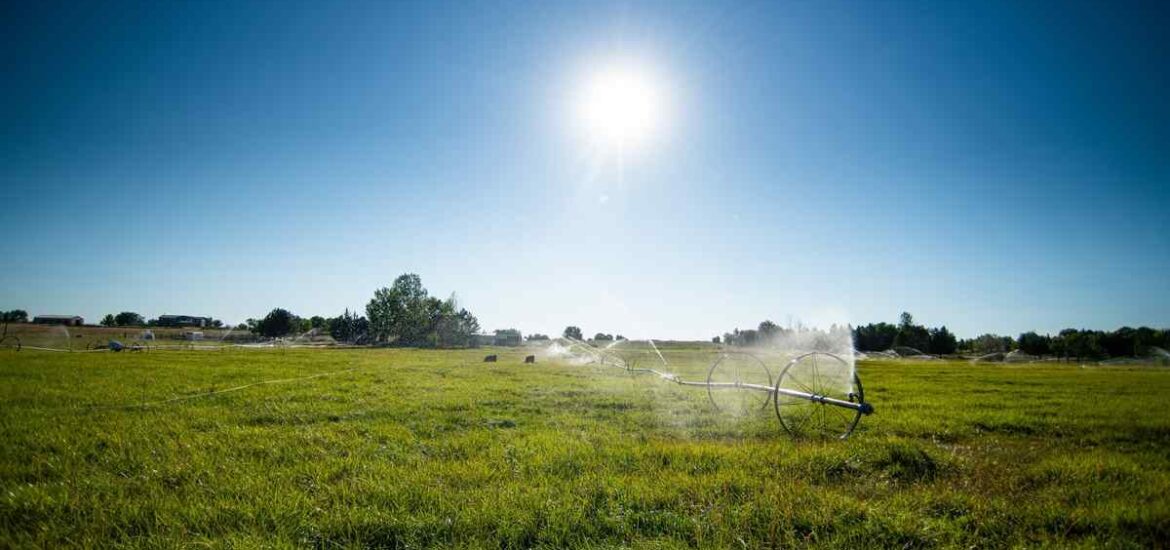Irrigation is a critical component of modern agriculture, ensuring that crops receive the necessary water to grow and produce yields, regardless of natural rainfall patterns. Different types of irrigation systems offer various benefits, from water conservation to increased crop productivity. In this article, we will explore the main types of irrigation systems, their advantages, and suitable applications.
1. Surface Irrigation
Surface irrigation is one of the oldest and most common methods, relying on gravity to distribute water across the field. This system includes techniques such as flood irrigation, furrow irrigation, and basin irrigation.
Flood Irrigation
Flood irrigation involves flooding the entire field with water. It’s simple and inexpensive but can lead to water wastage and soil erosion if not managed properly.
 Furrow Irrigation
Furrow Irrigation
Furrow irrigation directs water into small channels between crop rows. It’s more efficient than flood irrigation and reduces water logging in the root zone.
Basin Irrigation
Basin irrigation confines water to a level area surrounded by dikes, suitable for crops like rice that require standing water. This method can be highly efficient if properly designed.
2. Drip Irrigation
Drip irrigation, also known as trickle irrigation, delivers water directly to the plant’s root zone through a network of valves, pipes, tubing, and emitters. This method is highly efficient, reducing water wastage and ensuring that plants receive a consistent supply of moisture.
Advantages of Drip Irrigation
- Water Conservation: Minimizes evaporation and runoff.
- Improved Plant Health: Provides consistent moisture directly to the roots.
- Reduced Weed Growth: Limits water to areas around the plants, discouraging weed growth.
- Adaptability: Suitable for a variety of crops and soil types.
Applications
Drip irrigation is ideal for row crops, orchards, vineyards, and greenhouse plants. It is especially beneficial in areas with water scarcity or irregular rainfall.
3. Sprinkler Irrigation
Sprinkler irrigation mimics natural rainfall by distributing water through a system of pipes and sprinklers. This method can be stationary or portable, depending on the farm’s needs.
Types of Sprinkler Systems
- Fixed Sprinkler Systems: These are permanent installations with sprinklers fixed in one place.
- Portable Sprinkler Systems: These can be moved around the field, providing flexibility in irrigation.
Advantages of Sprinkler Irrigation
- Even Water Distribution: Ensures uniform water application.
- Flexibility: Can be used for various crops and field sizes.
- Climate Adaptation: Useful in areas with high temperatures and evaporation rates.
Applications
Sprinkler irrigation is suitable for field crops, orchards, and pastures. It’s also widely used in landscaping and golf courses.
4. Subsurface Irrigation
Subsurface irrigation involves delivering water below the soil surface, directly to the root zone. This method includes subsurface drip irrigation (SDI) and subirrigation.
Subsurface Drip Irrigation (SDI)
SDI is similar to drip irrigation but places the emitters below the soil surface. It provides the same benefits as surface drip irrigation while further reducing evaporation.
Subirrigation
Subirrigation raises the water table to moisten the soil from below. This method is often used in greenhouse environments and for specific crops like cranberries.
Advantages of Subsurface Irrigation
- Water Efficiency: Minimizes evaporation and surface runoff.
- Root Zone Targeting: Ensures water reaches the plant roots directly.
- Reduced Disease Risk: Keeps foliage dry, reducing the risk of disease.
Applications
Subsurface irrigation is ideal for high-value crops, greenhouse plants, and areas with high evaporation rates.
5. Center Pivot Irrigation
Center pivot irrigation is a type of sprinkler irrigation where equipment rotates around a central pivot, watering crops in a circular pattern. This system is highly automated and efficient.
Advantages of Center Pivot Irrigation
- Labor Efficiency: Reduces the need for manual labor.
- Uniform Water Distribution: Provides consistent watering across the field.
- Scalability: Suitable for large fields and various crop types.
Applications
Center pivot irrigation is commonly used in large-scale farming for crops like corn, wheat, and potatoes.
6. Lateral Move Irrigation
 Lateral move irrigation, also known as linear move irrigation, operates similarly to center pivot systems but moves in a straight line rather than rotating. This system requires a water source along the field’s edge.
Lateral move irrigation, also known as linear move irrigation, operates similarly to center pivot systems but moves in a straight line rather than rotating. This system requires a water source along the field’s edge.
Advantages of Lateral Move Irrigation
- Even Water Distribution: Ensures uniform application across rectangular fields.
- Automation: Reduces labor requirements.
- Adaptability: Suitable for various field sizes and shapes.
Applications
Lateral move irrigation is used in large, rectangular fields and is suitable for a variety of crops, including cereals, vegetables, and fodder.
7. Manual Irrigation
Manual irrigation involves watering crops by hand using buckets, hoses, or watering cans. While labor-intensive, it is essential for small-scale farming and gardening where other systems are impractical.
Advantages of Manual Irrigation
- Cost-Effective: Requires minimal investment in equipment.
- Flexibility: Allows precise water application.
Applications
Manual irrigation is ideal for small gardens, greenhouses, and areas with limited access to irrigation infrastructure.
Conclusion
Choosing the right irrigation system depends on various factors, including crop type, field size, water availability, and budget. Each system offers distinct advantages and is suited to specific agricultural needs. By understanding the different types of irrigation systems, farmers can optimize water use, improve crop yields, and contribute to sustainable agricultural practices. Whether you are managing a small garden or a large farm, selecting the appropriate irrigation method is crucial for achieving successful and sustainable crop production.

